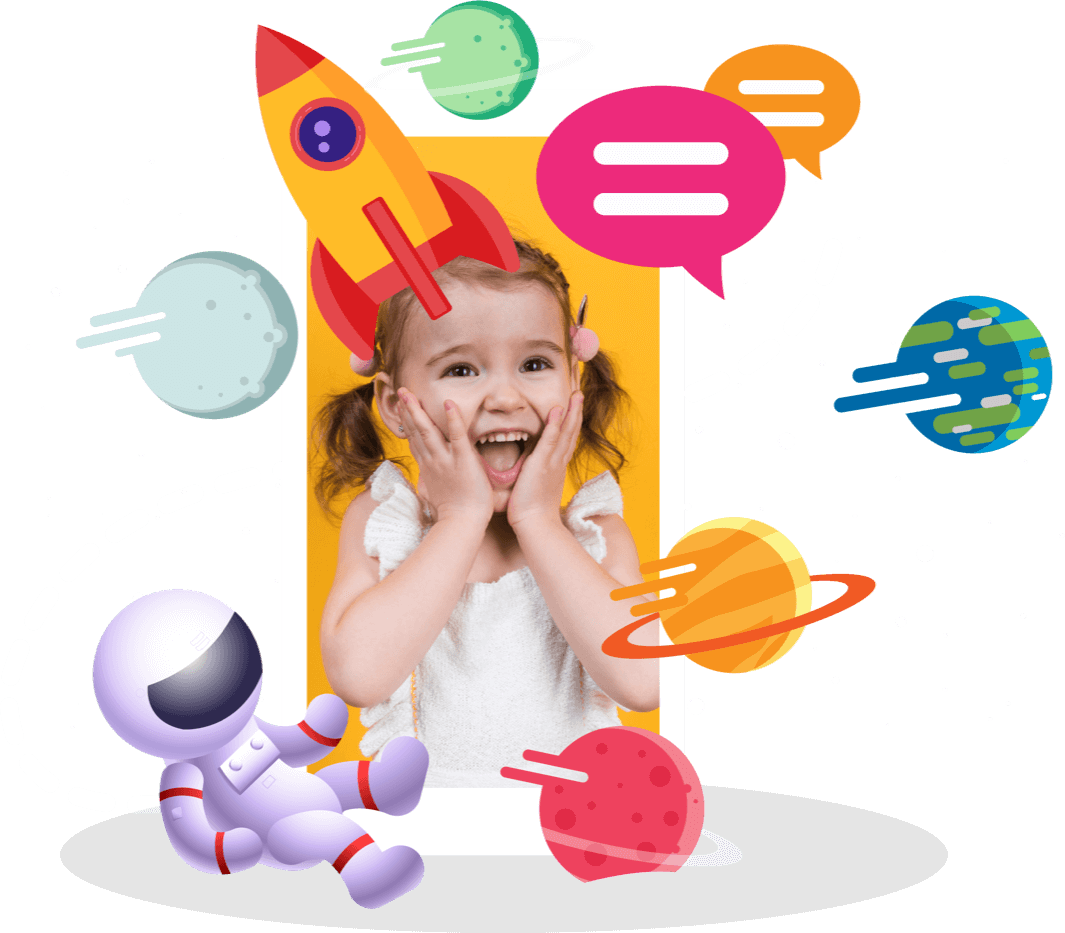Speech and language therapy (SLT) started to appear slowly as a profession in the 18th and 19th centuries, and has become more popular throughout the 20th century. Until the early 1990s, SLT has been used in many settings , including public speaking, pronunciation, and correcting speech defects. Later, specialists from many fields, like surgeons, teachers, and neurologists, have become interested in communication and neurologists have started to study speech production and brain areas involved in it. Therefore, speech therapy slowly started to earn great reliability. Also, dating back from the beginning of the 1950s, SLT was used for soldiers who had serious head injuries resulting from the second world war. However, similarly to other health professions, the foundations of speech therapy were based on concern for people with impairments and self-interest in helping those in need
What is Speech Therapy?
Speech and language therapy is one of the intervention methods that offers help to children and adults facing difficulties with communication, or with drinking, eating, and swallowing. The aim and the practical use of speech and language therapy are to help people communicate in a more effective way. However, it should be noted that communication and speech-related difficulties differ from person to person. These difficulties include;
- Social communication: How great we understand and apply the rules during talking, like turn-taking, or how further we stand to individuals while talking considering personal space, or how differently we talk to other people depending on the intimacy.
- Language: How well we use the right words when we talk with other people, and how well we understand everything we hear, and read.
- Speech Sounds: How well we pronounce sounds and produce words with those sounds.
- Voice: Are we able to make sounds? How well does our voice sound? Does it sound hoarse?
- Fluency: How fluent are we when we speak? Does the speech flow or do we stutter?
- Feeding and Swallowing: Do we chew, suck, swallow food, and liquid well?
How Speech and Language Therapy is Used
As mentioned above, speech and language therapy can be used for different reasons . For some people, it is to help them learn to swallow again after they experienced a trauma, such as a stroke or a head injury. Also for others, it can be used to make them learn strategies to understand spoken language and, in turn, produce conversational, communicative behaviors, or to use their voice and muscles appropriately to produce the right sounds.

The Role of Speech-Language Pathologists in Therapy
Speech-language pathologists (SLPs) work in various settings and with people from all age groups. SLPs are qualified to examine, diagnose, and treat, the following disorders , while also preventing the progression of them combined with early intervention;
For Children
- Dyslexia
- Auditory processing disorder
- Language disorders
- Social communication disorder
- Learning disabilities experienced by nonverbal children
- Selective mutism
- Voice disorders
For Adults
- Difficulties in learning
- Problems with mental health
- Hearing issues
- Problems in producing voice
- Communication, eating, swallowing problems occurring due to a stroke/ a head injury
Management of Language and Communication Difficulties in Children
Speech-language pathologists are trained to work on skills including reading, listening, speaking, and language. Also, SLPs’ work setting includes private services, where the treatment is provided to individual kids, as well as in schools, where they provide treatments to a group of children. Based on a child’s need and the area she or he lacks skills in, SLPs plan activities for the child’s specific issues to develop the necessary skills. These activities depend on your child’s needs, and they could be;
-
Enhancing phonological awareness skills: This could help your children in reading and decoding skills, which are known as using letter-sound knowledge appropriately to pronounce written language. The SLP could initially start teaching the child rhyming, and make the child recognize the initial sounds in words.
-
Improving language to verbalize complex ideas: Sometimes children might have difficulties in expressing complex, difficult ideas, and they might be able to speak in only short sentences. Therefore, the SLP could help your child to express themselves in longer sentences by helping them to add more information and details. For example, the SLP could teach the child conjunctions, which are known as joining words (and, but, because, etc.) to integrate more ideas in a sentence.
-
Comprehension of inferences: When you read something, some ideas are clearly stated, and others are implicit and open to interpretation. Sometimes, children are not able to understand what they read, or what the paragraph is trying to deliver. For this reason, the SLP could act on helping your children to recognize and understand the key ideas of the things they read.
-
Boosting vocabulary: Having good vocabulary knowledge is essential in terms of speaking, reading, and listening. To improve children’s vocabulary, the SLP could help them learn and remember new words by making them retell stories, or play vocabulary games.
Come along with 200k+ families!
Explore the endless possibilities of learning!
Download for Free.
-
Creating plans to strengthen reading comprehension: Some children might have problems with understanding what they read. To overcome this issue, the SLP could begin by talking about a topic of the reading to remind them what they know about the reading topic. Also, the SLP could help children by leading them to find images and words in the reading material, which can be clues to help children to understand the reading better.
-
Increasing social communication skills: Some children might have difficulties when interacting with other people and they might not know when to take a turn during the speaking. They might also lack the skills to talk to different people with whom they have varying intimacy levels. So, the SLP could help your children with improving their reciprocal communication, giving attention to the speaker’s voice, gesture, body language, and emotions.
Autism and Speech Therapy
Nearly half of the population with autism have communication impairments , including problems in functional speech, and nonverbal communication. Specifically, the signs of autism-related communication impairments could occur at any age, and these signs could be;
- Absence of speech
- Failure to understand others’ feelings
- Repeating words and phrases consistently
- Insufficient understanding of facial gestures, body language, and proximity rules
- Delayed development of language
Speech Therapy Principles for Children with Autism
Speech-related and communication issues differ from one person with autism to another. Some children with autism are able to talk, whereas some are not. For this reason, a speech-language pathologist (SLP) should carefully examine an individual to get a better understanding of his or her weaknesses and strengths in communication. To understand the severity of communication and speech-related issues, there are a couple of things that SLPs could do ;
-
Evaluate the child’s functional and spontaneous communication: This is usually the first step in speech therapy. The SLP assesses the child’s communication level and whether he or she is able to communicate for basic needs without being supported and prompted to explain himself or herself.
-
Ensure to provide social instructions in various contexts: Children with autism struggle to behave appropriately in many contexts and they usually do not have enough understanding of how to behave in a manner that is socially acceptable. Therefore, a speech-language pathologist teaches some strategies to the child, so that the child is able to behave appropriately in society, depending on the context he or she is in. These strategies include;
1. Visual supports: Adding some visual reminders to the room or being provided these reminders by the parents to help the child remember the expectations for various situations. 2. Social stories: Providing some books to the child which are created to show the expected behaviors for specific situations, so that the child could understand it easily. 3. Video modeling: Providing pre-recorded videos that show the socially acceptable and expected behaviors for specific situations.

- Assessment of peer interaction skills: It is known that children with autism have challenging times with peer interactions. Therefore, usually, speech-language pathologists target peer-interaction skills when evaluating a child with autism and communication issues. They provide support and strategies to increase peer-interaction skills which are age-dependent, meaning that a child’s interaction skills with a peer are dependent on his or her age. The strategies to enhance a child’s peer-interaction skills consist of;
1. Play skills: Improving playing skills by teaching the child how to play with other children and to get on well with them. 2. Responding to name: Sometimes children with autism may not respond when someone calls their name. Therefore, a speech-language pathologist teaches the child to respond when his or her name is called. 3. Enhance joint attention: Sometimes, attention might be difficult for children with autism and they might not know what to pay attention to and what not to. So, a speech-language pathologist __teaches the child to give attention to those around him or her. __
-
Providing support and training to the child’s network: Understanding your children, putting yourself in your children’s shoes is essential to help them improve their communication and speech-related deficits. For this reason, a speech-language pathologist also works with those around the child seeking therapy as well. They work with the child’s parents, teachers, and caregivers. Therefore, the child is able to practice the communication strategies that are taught during therapy with many people, which helps him/her to develop these communication skills faster.
-
Improve other areas related to communication skills: After all of the essential steps are completed, a speech-language pathologist looks at other areas that could cause some problems in the child’s communication and tries to improve them. There can be many causes to these issues, including;
1. Grammar 2. Difficulty answering and asking questions 3. Difficulty understanding figurative language ; The ability to understand beyond what is directly, and explicitly stated.
What are the Benefits of Speech-Language Therapy for Autism?
So far, we have talked about how speech-therapy is applied and the steps that are usually taken during the therapy. Earlier studies demonstrated that speech-therapy have many benefits for children with autism in terms of improved communication and speech-related changes. Also, when researchers observed a child who was still under the treatment in speech-language therapy, they have found that the child started to get better in imitating others, verbal language, and receptive language, where he attempted to understand others, and tried to apply given directions and commands. The same study conducted with another child also showed improvements in his receptive, expressive language, as well as in his vocabulary, and in group performance. However, generally speaking, there are some other benefits such as the following;
- Expressing words well
- Improved nonverbal and verbal communication.
- Enhanced conversational skills.
- Starting a conversation without being directed, and prompted by other people.
- A better understanding of others’ intentions in various contexts helping the child to communicate more effectively.
- Improved awareness and understanding of socially acceptable behaviors. For example: when to say good morning, and good night, or bye and hello.
- Being able to exchange opinions with others.
- Increased peer-interaction and satisfaction to spend time with other people.
- Learning self-control, and self-regulation.
Come along with 200k+ families!
Let's communicate better!
Download for Free.
Parents’ Role in the Process
Early studies showed that intense intervention, which is provided by including the people around the child (family members and parents), could be beneficial for children with autism spectrum disorders. Parents are seen as the essential parts of the process due to the time children spend with them, which can allow the child to have more practice opportunities continuing at home in addition to the therapy sessions. Therefore, parents’ involvement and their role can provide necessary pieces of information related to family values and routines, as well as, the child’s inclinations, and strengths.
In addition, preliminary research showed that parents could be powerful interventionists at home, leading to an improvement in the parent-child interactions and an increase in the degree of intervention they receive. It would not be a stretch to think that communication and speech problems could lead to an impairment in the child-parents interactions. Families and parents around the child are affected by the issues related to autism spectrum disorders, therefore, inclusion of the parents and caregivers in the treatment is not only beneficial to the child, but it can also enhance the functioning of the families and parents .
Moreover, treatment outcomes are dependent on many factors, including but not limited to early intervention, persistent, and intense intervention, and lastly, the involvement of the parents in treatment . Taking these studies into account, and consideration might be helpful in terms of setting a therapy path.
Benefits of Including Technology to Your Daily Speech Therapy Practices
Early studies showed that mobile apps have the possibility and potential to enhance communication and speech-related deficits in children, which could also contribute to the efforts put by speech-language pathologists. We are now in an era where many kids are involved and interested in using technology more than ever before. Children can easily manipulate and use the devices for longer periods of time without much instruction. Therefore, speech-language pathologists can take advantage of this and incorporate some apps focusing on enhancing children’s communication and speech-related deficits outside of the therapy sessions. 
However, it would not be advisable to use speech-production apps only in place of speech-language therapists and clinical professionals. They can be an additional tool that provides extra help . A clinical assessment and judgment are necessary to track the effectiveness of an app as a supporter of therapy. Even though some apps might be user-friendly, they might provide faulty feedback, like taking false sound production as the correct one, causing improper collection of data. Therefore, it would be wise to consult a speech-language pathologist before you download an app for your children. On the other hand, there are some benefits of using apps for children with speech and communication deficits, and these include the following;
- They are attractive and motivating for children in comparison to traditional instruments.
- They track the progress of the child, easily allowing the speech-language pathologist to assess the progress and celebrate the success of the child.
- They can be a great supporting tool for children with autism for schedules, symbols, timers.
- Some game apps are indeed effective in terms of stimulation of language through activities.
As mentioned before, some children with autism spectrum disorders might have speech-related and communication difficulties. To this end, speech-language therapy has been found to be helpful, and the mobile apps that could support the improvement in these deficits were proven beneficial. Therefore, the utilization of speech-language therapy and the mobile apps that focus on improving communication and speech-related deficits in conjunction could be effective.






